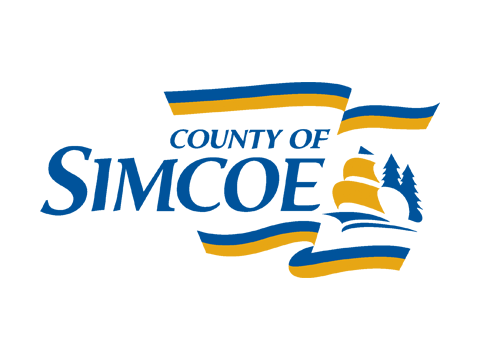History

The beach named Cedar Point runs along the shore from the north-west corner of Tiny eastward towards Mark’s Point. It looks out to Christian, Beckwith and Hope Islands. The point was known as Pt. Etondatrateus in the 1600s and Glover Point on Bayfield’s map for the British Admiralty in 1864. The present name is found on maps as early as 1880.
In 1899, avocational archaeologist A. F. Hunter reported the remains of a Huron village on a “…high lake terrace or plateau…with Beckwith Island just opposite.” He noted this site as a possible location of Toanche, the village where Samuel de Champlain first stayed upon his arrival on the shores of Huronia in August 1615. Later archaeologists, Rev. A.E. Jones (1908) and C. Heidenreich (1970) suggested that this was the location of a later village named Tondakea dating to 1634-1638. In the Huron or Wendat language, Tondakea means ‘where the land disappears.’ Regardless of the name or precise date of this village, the archaeological records indicate that Cedar Point and its environs played a role in the early history of Huronia as recorded by Champlain, the Recollect friar Gabriel Sagard, and in the Jesuit Relations.

After the Iroquois drove the Wendat out of Huronia in 1649, the area remained relatively uninhabited until the early 1800s. With the arrival of the Midland Railway in 1870s, the peninsula north-west of Penetanguishene was extensively settled with farms, and the timber rights along much of the shoreline of Cedar Point were held by either the Georgian Bay Lumber Co. or C. Beck Lumbering Co.
In 1934, 16 acres of Lot 20 were sold to the Dominion of Canada by Charles C. McGibbon from Penetang. He purchased it from Alexander Brunelle, whose family lived at Thunder Beach and fished Nottawasaga Bay and the islands. This land is now part of the Beausoleil First Nation’s land and includes the wharf where the ferry runs to Christian Island. The remainder of the shoreline to the east was divided up into 10 diagonally oriented lots by Alexander and the first was sold in 1947.

In 1916, Tom Lynn, a butcher originally from Toronto, purchased 117 acres of Lot 19 from Wm. Richardson, a farmer. He moved his wife, Jean, and infant daughter, Jessie, to Cedar Point. In 1923 he purchased 63 acres of Lot 17 and in 1929 he added 69 acres of Lot 18. By this time, the Lynns owned at least half of the shoreline from Cedar Point to Mark’s Point. Tom and Jean opened and operated the only general store in the area in the original Richardson farmhouse for the convenience of the natives, locals and early cottagers by providing basic goods such as milk, butter, flour, bread and penny candy for the kids. Ice was cut in the winter and hauled up to the ice house beside the store. The ice was stored in sawdust and delivered to the early cottagers twice a week. In 1936, they began subdividing the shoreline. As well as running the store, Tom and Jean built six rental cottages; most of which still remain today and by 1938 he had sold about nine lots privately. The first actual store and the ice house are still standing.
In 1939, Tom sold Lionel Conacher about a mile of shoreline. Over the next six years, Lionel commissioned Tom Pilon from Penetang to build five large, squared log cottages for himself and his wife, Dorothy, and their friends to use. Some of the logs were from older buildings in the area, some were from trees on the property and some were brought across the ice in winter from as far away as Victoria Harbour.
Most of the remaining shoreline lots and rental cottages were purchased between 1941 and 1949. Some of the other early property owners include: Hal and Una Watson, Dave and Lulu Scully, Tommy and Effi Lytle, Bill and Joan Shelly, Fred and Lena Brown, George and Alva Johnson, John and Mary Gifford, Bill and Beatrice Austin, Bob and Helen Stuart, Jessie and Ed Culligan, Jack and Velma Deschamps, Jock and Connie Porter, Don and Lilyan Morgan, Fred and Dot Lyon, Doug and Ivy Cosford, Bill and Olive Saunders, J.M. McGee, George and Edith Hammond and Dick and Betty Pearce.

Being at the end of the line, the beach was very isolated with no electricity until 1950. Wood stoves were used for heating and cooking and oil lamps provided light in the evening. During the war years, men carpooled and they always tried to leave at least one car at the beach for emergencies. The roads from the beach to Penetang were all gravel and if a cottager went for provisions, that person always shopped for several cottages. Fresh produce was sold to cottagers by local farmers, Wilf and Estelle Pauze and, at that time, lake trout were plentiful in the bay.
Tom Lynn died in 1949. A year later, the Cedar Point Store was built on the site of a community baseball diamond by Pete Deschamps. His son Jack and wife Velma ran the store with Pete (aka PD) and his wife Alice’s help. Jean Lynn continued to summer at Cedar Point with her daughter Jessie Culligan and grandsons in the original Richardson farmhouse located beside the general store she and Tom built. She was often seen rocking in the summer sun wearing a full length black Victorian dress and leather boots. Jean died in 1958. In the same year, postal service arrived at the Cedar Point Store eliminating the need to travel to the post office in Penetang. ‘The Store’ was operated by a number of couples over the years: Deschamps, Hibbs, Lediard, Gregoire, LeBlanc, Trudeau, Robitaille and Lacroix. The post office and store officially closed around 2012.
By 1968, the last of the Lynn property had been sold by their daughter, Jessie. The area has changed very little in 70 years. Descendants of many of the original families are in the same cottages and presently about 65 cottages make up the community of Cedar Point.









